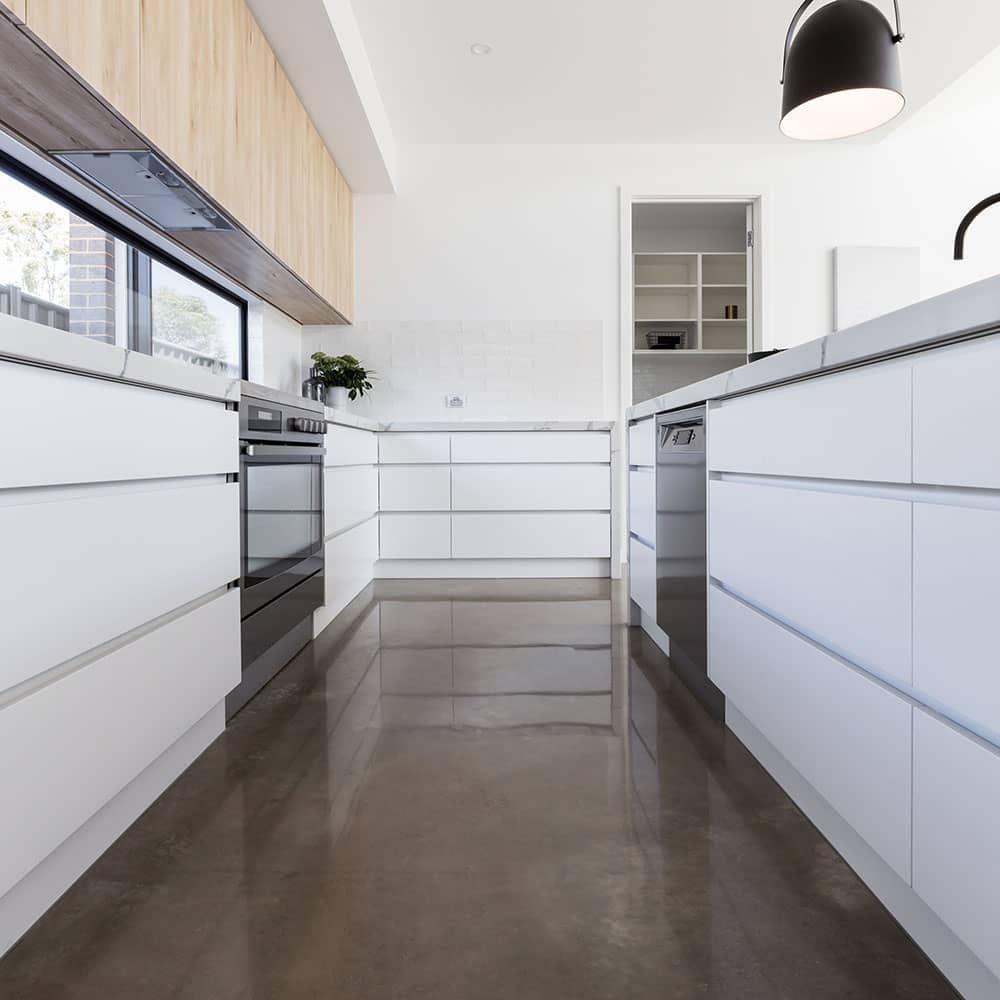Polished concrete and tiles are tough – literally. They are both incredibly durable, withstanding a number of external stresses and pressure. Choosing between polished concrete and tiles can be a difficult decision to make. How do you pick when both have their own pros and cons?
Should you opt for trendy polished concrete whose finished looks are difficult to match? That’s right. It’s time to get rid of the notion that concrete is only for warehouses and roads. Polished concrete is beautiful, glossy, and striking.
But what about tiles? They are the classic flooring option. You can find it in almost every home you have ever seen. Tile flooring can actually take on any look and pattern.
If you find it hard to choose, then this blog post is for you. We examine the finer details of tiles and polished concrete. That way, you can select the option that works best for you.
Aesthetics: Which Looks Better?
Concrete is typically viewed as the flooring type for industrial sectors, warehouses, pathways, and driveways. That’s no longer the case. Even though colour and texture options have been around for a long time, many people still get surprised by how appealing the material can look. If pouring fresh concrete, it can be pigmented right from the start. An alternative is to add a stain.
Tile, on the other hand, is equally versatile with numerous designs and colours. Your flooring can have any style, including wood-like, terracotta, and even smooth or glass-like. Tiles, just like concrete, can be used on walls and kitchen backsplashes.
Here’s the downside, though. Both polished concrete and tiles are both hard and tough, making them not-so-friendly on joints and bones. When standing on these surfaces for a long time, you will start feeling the strains on your heels and knees.
Durability: Which Has a Longer Life?
It’s clear that concrete can take a beating. The material itself is known for its durability and longevity, which is why it is a superior choice for parking lots and driveways. Therefore, if it is used in a residential property, there is no doubt that it can last for a long time – perhaps even a lifetime with proper maintenance.
Similarly, tile can last for several years, up to 50 years with the right care. So, which one is the better choice when it comes to longevity? Both tiles and polished concrete can give you value for your money. However, tiles are known to crack under intense pressure. If you drop something cumbersome, it will damage your tile. But the good news is that you probably only have to replace one or two tiles.
Affordability: Which is the Cheaper Option?
Prices can vary significantly, so the total cost is not straightforward to determine. Concreting is not expensive, which is why many homes and commercial properties choose concrete for several square metres of space. The job can cost anywhere from $25 to $100 for every square metre. The price may be lower or higher for you depending on several aspects, including:
- Size of the job
- Levelling requirements
- Drainage installation
- Site access
You also have to consider the labour rates, which are different in every location. It’s a relatively expensive process, but concreters have sophisticated equipment that can help speed up the process while also keeping the total costs down.
Tiles are normally less expensive, but again, the final price will depend on the area, the size of the site, and the other factors mentioned above.
An alternative is a polished concrete overlay, this is an almost identical process however a much thinner layer of concrete is poured drastically cutting costs.
Polished concrete and tiles cost almost the same. However, you need to include the installation costs to figure out which works for your budget. For more guidance, give us a call so we can provide you with an estimate for your home.
Installation and Maintenance: Which is More Convenient?
Polished concrete and tile are both easy to clean. If you spilt some coffee, you could just wipe away to reveal sparkling floors. Maintenance is hassle-free because all you need to do is to use any mild cleaner and mop the concrete or tile. You may also need regular sweeping and dusting, plus some vacuuming. That’s it! They are not like other flooring options that are so demanding.
Polished concrete may need a little bit of waxing once or twice a year. Usually, it is only required when you see there is a noticeable dulling of the surface. Nevertheless, that shine can quickly be brought back with just a few wipes. Meanwhile, tile grout can be filthy in just a few months. Steam-cleaning should do the trick to remove the grime.
When it comes to installation, it is not recommended to install concrete on your own. Of course, it’s doable and much cheaper, but the process can be quite dangerous. You do not want any risks that will only result in more expenses.
Tiling, though, does not need hiring a contractor, although it is advised. The process is tedious, but handymen can do it.
Eco-Friendly: Which is Safer for the Environment?
These days, it is essential to think about the wellbeing of the planet. Tiles are not exactly the most sustainable material on the market, but concrete is. This is where polished concrete takes a massive lead because it is eco-friendly. Also, it should be noted that most subfloors are typically concrete. They only require a bit of refinishing, and there’s no need for new materials.
Both tile and concrete do not release harmful toxins in the environment. But tile production does expend a lot of energy, making it an unsustainable option.
Other Factors to Consider
A common issue with concrete is that it is susceptible to moisture. Tile is known for its water-resistant qualities. But polished concrete can have a waterproof coating. Spills and dirt will not get trapped underneath, unlike untreated concrete. It’s why simple mopping can keep the floor clean and healthy.
Finally, comfort should be considered, as well. A widespread misconception about concrete floors is that they are cold. Concrete itself is viewed as a cold material, perhaps because it is grey and resembles stone. But concrete is a high thermal mass material. When exposed to sunlight, it immediately absorbs and stores heat, which makes it beneficial during winter.
So, Which Should You Pick?
Overall, both tile and concrete have advantages and disadvantages. Your ultimate choice boils down to which you think is better for you. Determine where you will install the flooring. For the kitchen and bathroom, tiles are often a more popular option because they are waterproof. But as mentioned above, polished concrete also has the same qualities.
If you are in a time crunch, consider what your subfloor consists of. If it is already concrete, you only need to refinish and polish it, which should not take weeks. Tiling can take long, although you can install it on your own, as long as you are aware of the risks.





